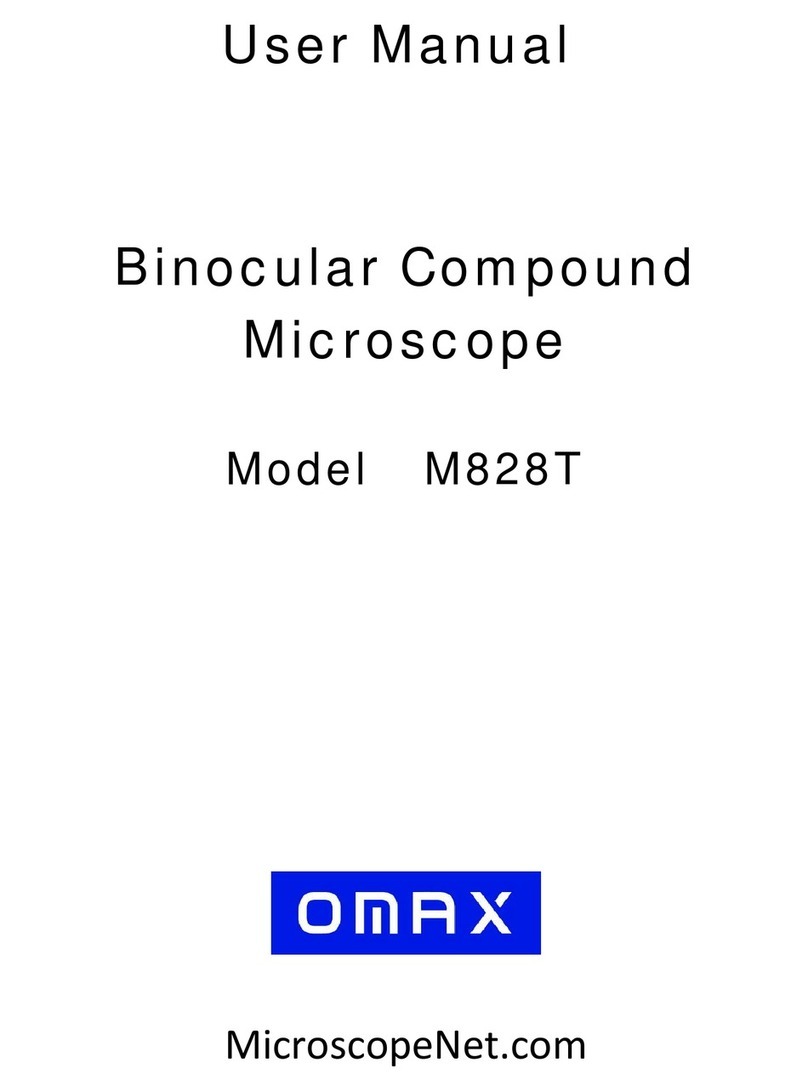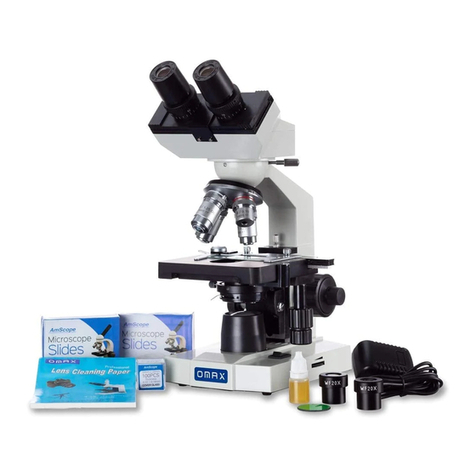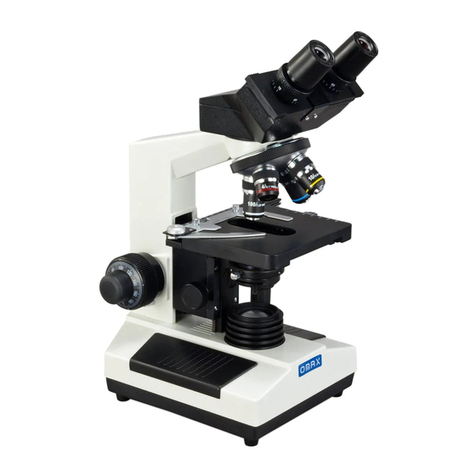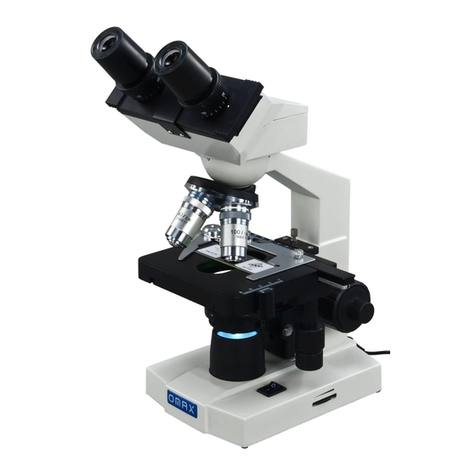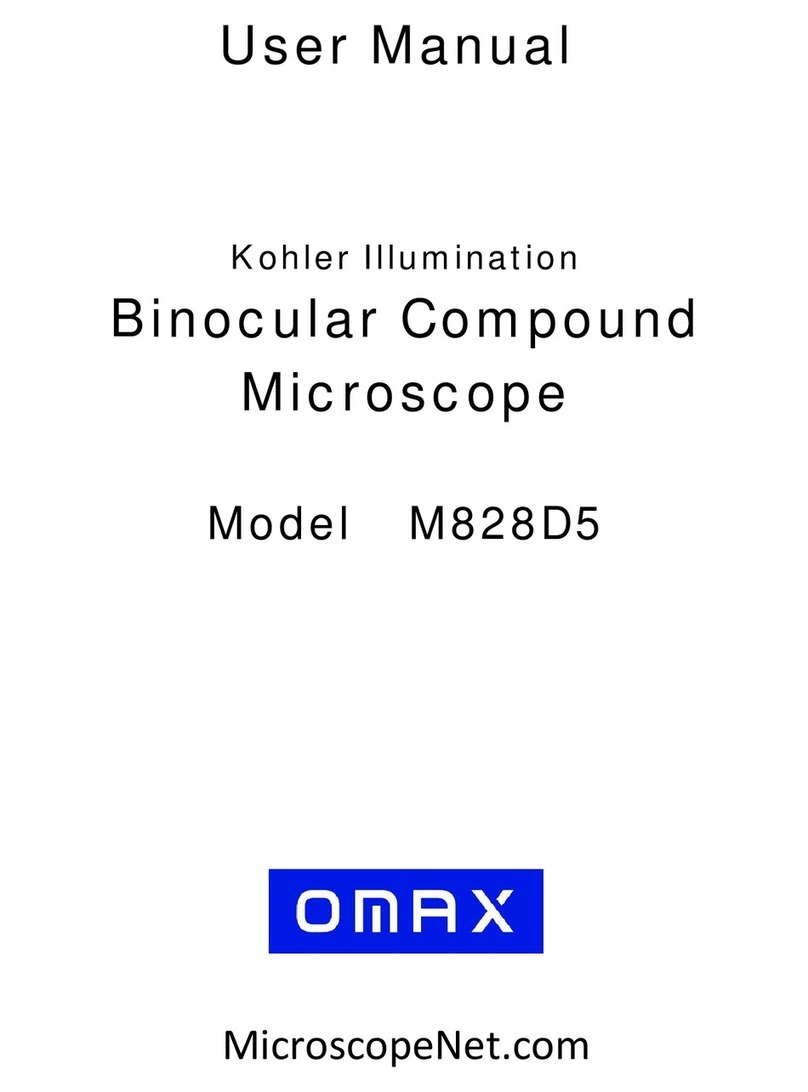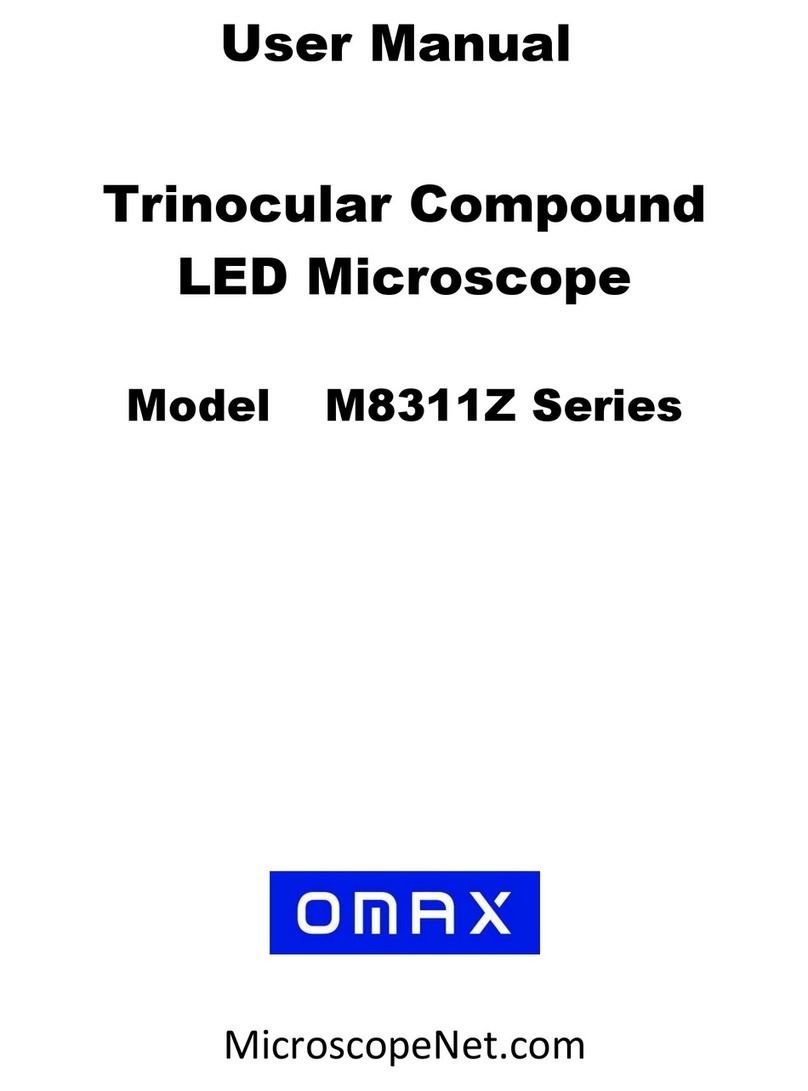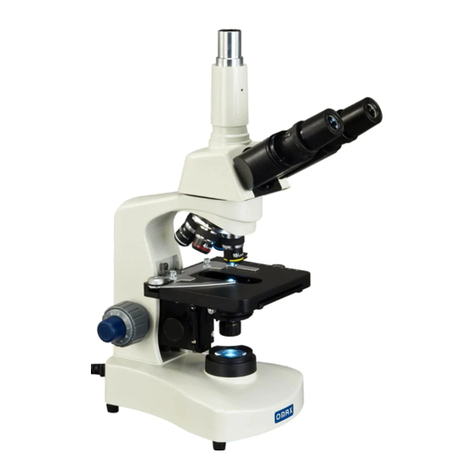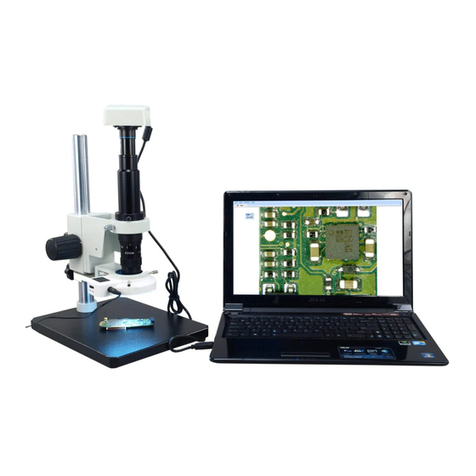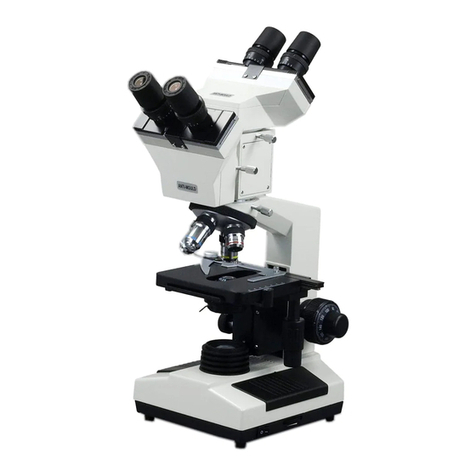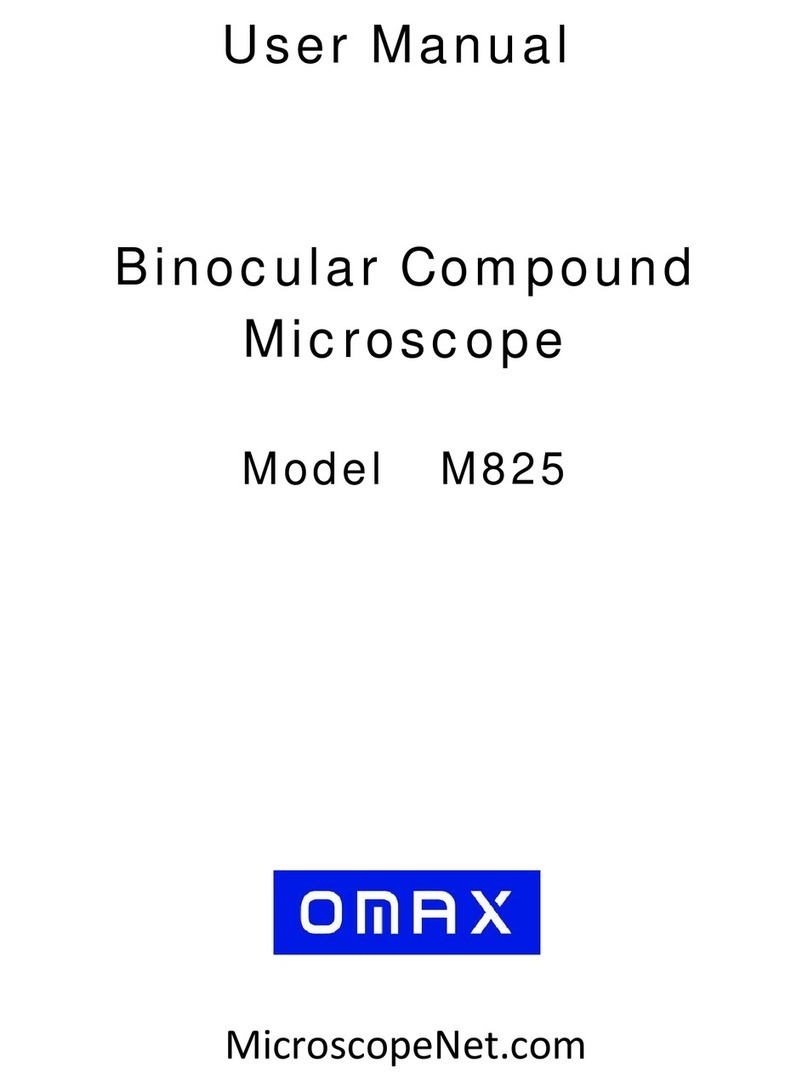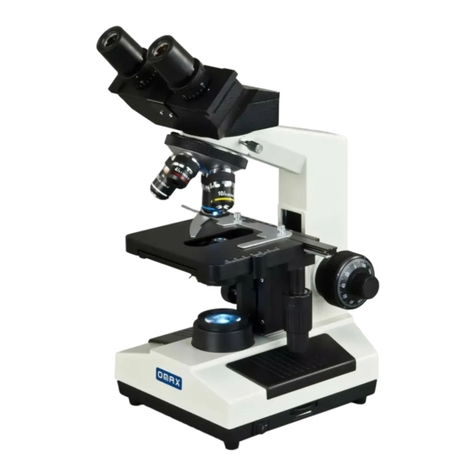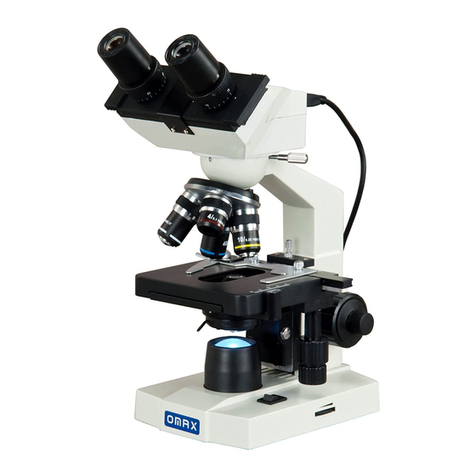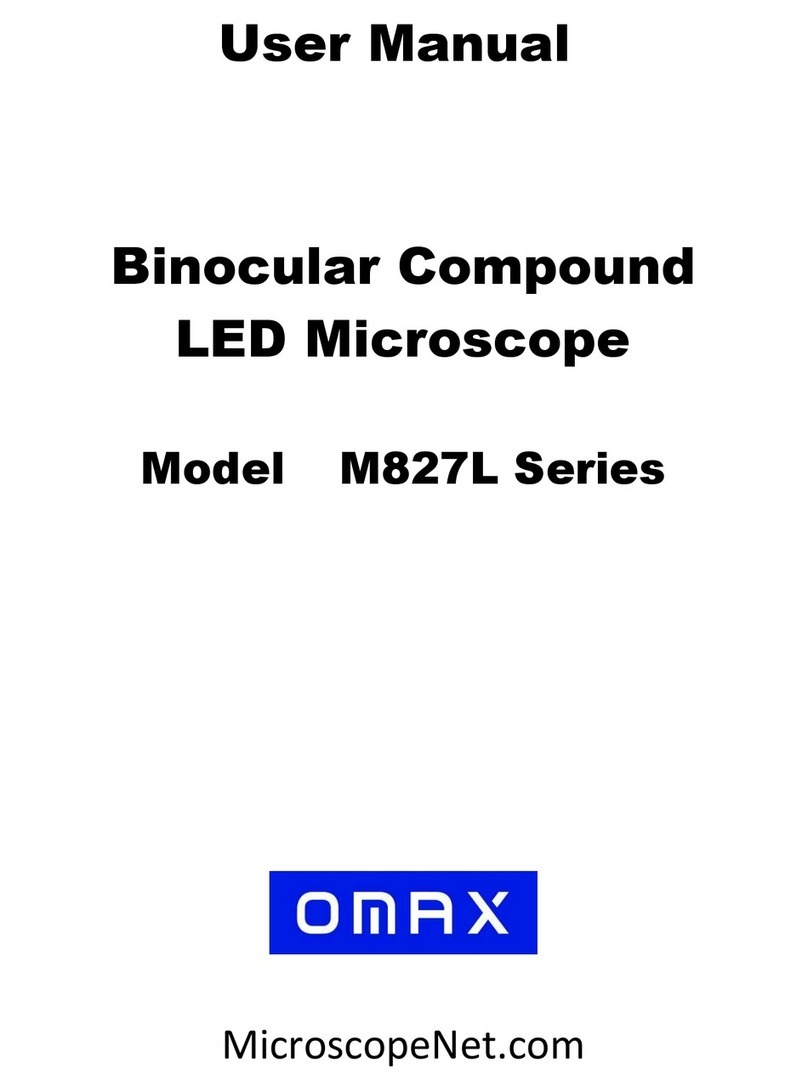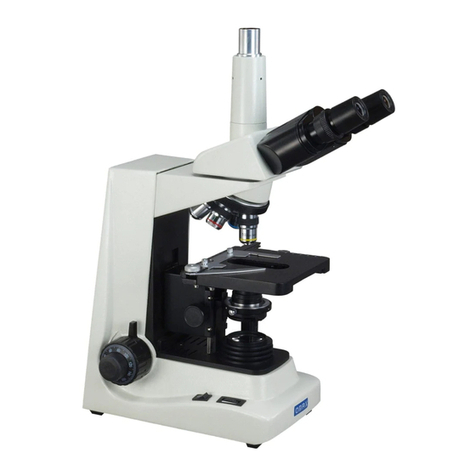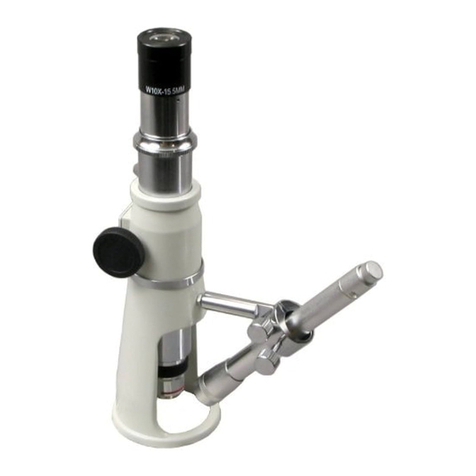
www.microscopenet.com
6
Tips:
To prevent your specimen slide from making contact with
an objective, turn the 40X objective in position and adjust
the thumb screw of focus stop (as shown in Fig.3) so that
the 40X objective will not contact the specimen while the
stage is adjusted to its highest position. Give the stage a
tiny extra moving space to ensure the objective can be
focused every time.
3.4 Adjusting interpupillary distance
While observing with both eyes, hold the left and right
eyepiece tubes then swing them around the center axis. The interpupillary distance is
correct when the left and right fields of view converge completely into one image.
3.5 Adjusting eyepiece diopter
1) Using the 10X objective and your right eye only, observe your specimen through the
eyepiece and bring it into focus by adjusting the focus knobs.
2) Then observe the specimen with your left eye only through the left eyepiece. If the
specimen is not in focus, turn the diopter ring on the eyepiece tube until a sharp
image is obtained.
3.6 Adjusting condenser
1) Turn the condenser focus knob to raise or lower the condenser.
2) The condenser is raised when using high magnification objectives and lowered when
using low magnification objectives.
Note:
The centering of the condenser and the light axis of the objective are factory
adjusted. Do not attempt to re-adjust.
The highest position of the condenser has been factory adjusted. Do not attempt to
re-adjust.
3.7 Adjusting iris aperture diaphragm
Swing the iris diaphragm lever (Fig.4) left or right to
adjust the aperture size.
Note:
The iris diaphragm is designed to adjust the aperture
size, not to adjust the brightness although the
brightness will be changed when it's adjusted. When
aperture is adjusted to smaller size, the contrast will
be increased and the depth of field will be increased
as well. Turn up the intensity of the light if the
image is too dim.
3.8 Adjusting focus knob tension
The tightness of the focus knob tension has
been pre-set at the factory. If the mechanical
stage drops by itself, rotate the tension
adjustment ring (Fig.5) located inside the focus
knob on the power switch side until the tension is
in maintained.


